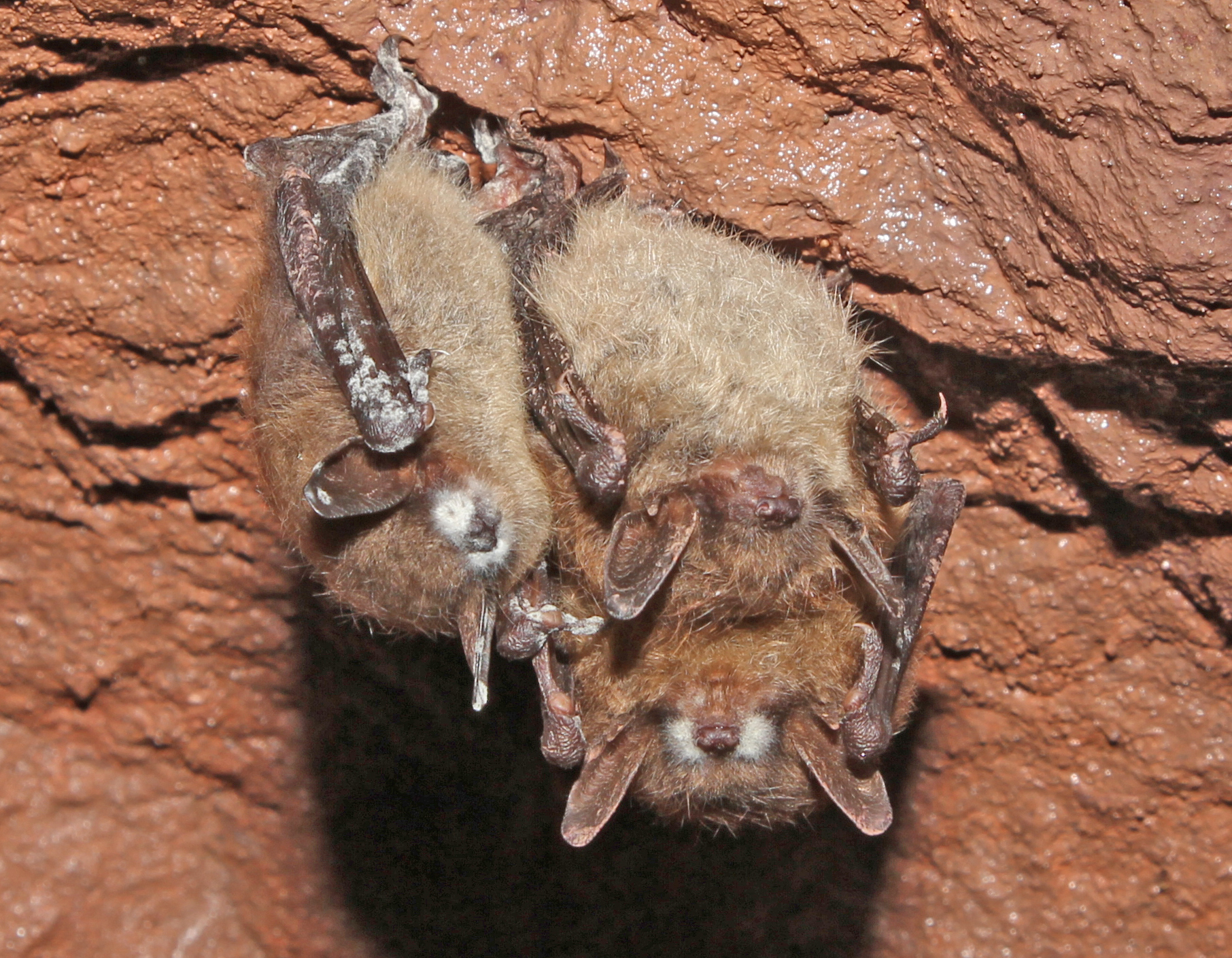White-nose syndrome, sometimes abbreviated WNS, is a skin disease of bats caused by a fungus named Pseudogymnoascus destructans. The disease occurs during winter, when many northern bats hibernate in caves. Bats hibernate to conserve energy during the winter, when food is unavailable. A hibernating bat becomes inactive and lowers its body temperature. During this time, the bat survives on stores of fat from autumn feeding.

The most obvious sign of white-nose syndrome is a white fuzzy growth on the nose that looks like cotton candy. The fungus also attacks the ears, wings, and tail. The fungus only grows on cool skin, like that of a hibernating bat. The fungus does not infect humans, because human skin is too warm.
Growth of the fungus damages the skin and enables a large amount of water to evaporate from the bat’s body. Other symptoms of the disease include changes in behavior. For example, infected bats may move to colder places within the cave, because the fungus grows more slowly at lower temperatures. Sick bats also frequently awaken from hibernation and become active. The active bat drinks water to replace that lost through its damaged skin. By awakening often, however, an infected bat rapidly uses up its stores of fat, running out in the middle of winter. This problem causes many sick bats to leave the cave in January or February in a desperate search for food. Eventually they starve, because the weather is still too cold for the flying insects they eat.
The fungus Pseudogymnoascus destructans is likely native to Europe. White-nose syndrome was first found in North America near Albany, New York, in 2006. The illness has spread throughout eastern Canada and the United States and has been found as far west as Washington state. Millions of bats have died from the disease. The fungus is reducing populations so drastically that the survival of some species (kinds) of bats is threatened.
